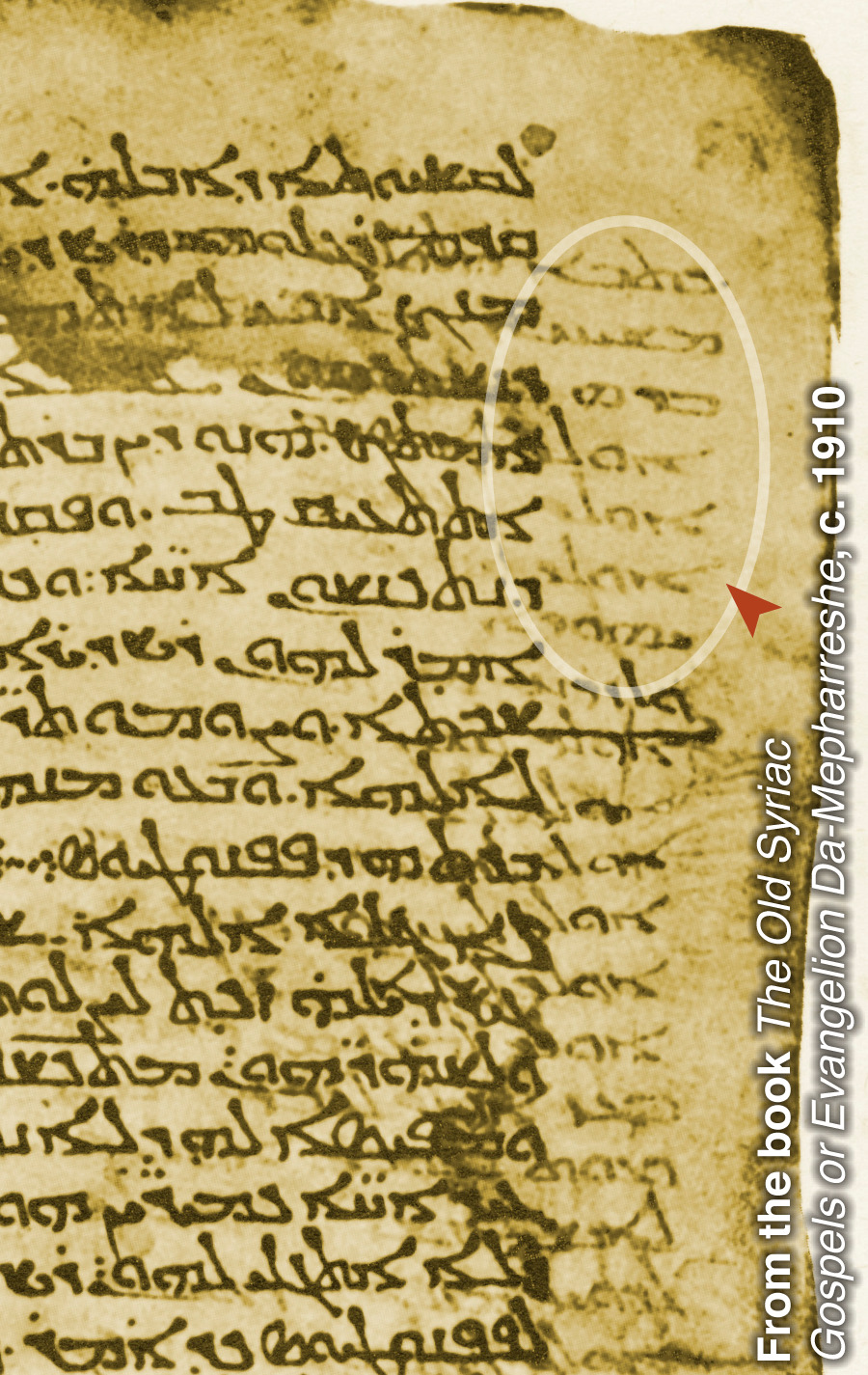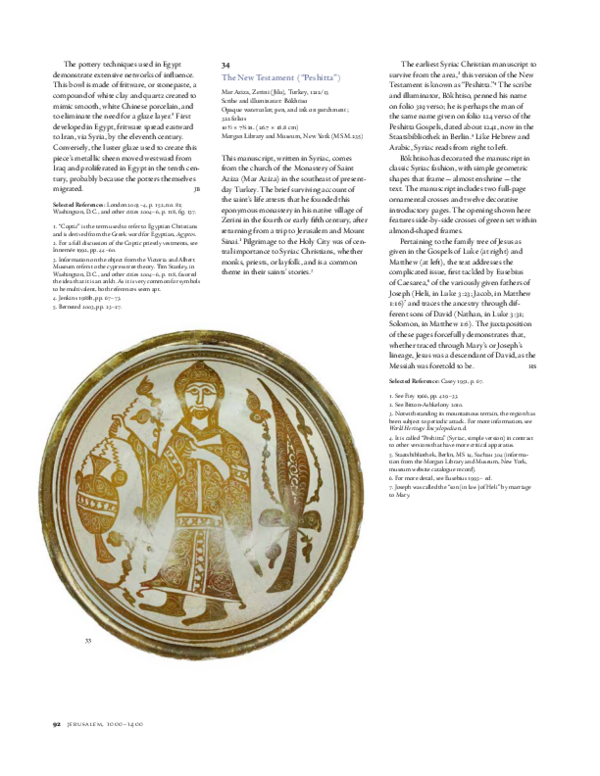The Peshitta is the official Bible of the Churchof the East. The name Peshitta in Aramaic means 'Straight',in other words, the original and pure New Testament. The Peshitta is theonly authentic and pure text which contains the books in the New Testament thatwere written in Aramaic, the Languageof Mshikha (the Messiah) and His Disciples.
- Pdf Copy Of The Peshitta Full
- Pdf Copy Of The Peshitta Story
- Pdf Copy Of The Peshitta Bible
- Pdf Copy Of The Peshitta Study
- Pdf Copy Of The Peshitta Movie
In reference to the originality of the Peshitta, the words of His HolinessMar Eshai Shimun, Catholicos Patriarch of the Church of the East, are summarizedas follows:
Textus Receptus - Editio Regia - Stephanus (1550).pdf download 25.4M Textus Receptus - Stephanus-Scrivener (1860) - b&w scan.pdf download. The Targums, the Peshitta, the Vulgate, and the Arabic version of Saadya. Talmudic and midrashic allusions and all available Jewish commentators, both the great medieval authorities, like Rashi, Kimhi, and Ibn Ezra, and the moderns S. Luzzatto, Malbim, and Ehrlich, as well as all the important non-Jewish commentators, were consulted.
'With reference to....the originality of the Peshitta text, as thePatriarch and Head of the Holy Apostolic and Catholic Church of the East, wewish to state, that the Church of the East received the scriptures from thehands of the blessed Apostles themselves in the Aramaic original, the languagespoken by our Lord Jesus Christ Himself, and that the Peshitta is the text ofthe Church of the East which has come down from the Biblical times withoutany change or revision.'
Mar Eshai Shimun


by Grace, Catholicos Patriarch of the East
April 5, 1957
Folio 154 verso of Sinai Syriac 2
(Peshitta, V century), John 17:7-17.
Thanks to Jean Valentin.
Peshitta NewTestament Ms.Variously identified as6th or 7th Century.
In reference to Aramaic, the Latin Patriarch Maximus atVatican II, stated:
'Christ, after all spoke in the language of Hiscontemporaries. He offered the first sacrifice of the Eucharist inAramaic, a language understood by all the people who heard Him. TheApostles and Disciples did the same and never in alanguage other than that of the gathered faithful.'
Codex Ambrosianus - 5th Century
Ambrosian Library, Milan, Italy.
Thanks to Alan Aldawood.
These are claims that are highly contested in WesternChristianity. The common misconception that the New Testament wasoriginally penned in Greek still persists today in a vast majority of Christiandenominations. Most scholars and theologians acknowledge that EshooMshikha, the Apostles, and the Jews in general spoke Aramaic indeed manyinstances of Aramaic survive in the Greek New testament manuscripts. However, they still maintain that the New Testament was penned in Greek by theApostles and disciples of Mshikha.

Aramaic Lectionary - about
A.D. 550.Pierpont Morgan Library
New York, N.Y.
Pdf Copy Of The Peshitta Full
The Church of the East has always rejected this claim. We believe that the Books of the New Testament were originally penned inAramaic, and later translated into Greek by first-century Gentile Christians inthe West, but never in the East, where the Aramaic was the Lingua Franca of thePersian Empire. We also hold and maintain that after the books weretranslated into Greek, the Aramaic originals were discarded, for by now theChurch in the West was almost completely Gentile and Greek-speaking. Thiswas not the case in the East, which had a Jewish majority (especially in Babylonand Adiabene) for a much longer period. Even when the Church of the Eastbecame mostly Gentile, the Aramaic was preserved and used rather than translatedinto the various vernacular languages of the regions to the East of theEuphrates river.
Pdf Copy Of The Peshitta Story
PeshittaOld Testament MS. - A.D. 464.Oldest datedBiblical Manuscript in existence. British Museum, Add. Ms. 14,425.Thanks to Alan Aldawood.
Peshitta MS.
(Exodus. xiii. 14-16)--A. D. 464.
(British Museum, Add. MS. 14; 425.)
Four books or the Pentateuch, viz:Genesis, Exodus, Numbers, and Deuteronomy according to the Peshitta version, inthe Estrangela characters. Written in the city of Amid, Assyria A. D. 464:the oldest dated Biblical manuscript in existence. From the monastery of St.Mary Deiyara in the Nitrian Desert of Egypt.
Even to the West of the Euphrates river, in the Holy Land,the main vernacular was Aramaic. The weekly synagogue lections, calledsidra or parashah, with the haphtarah, were accompanied by an oral Aramaictranslation, according to fixed traditions. A number of Targumim inAramaic were thus eventually committed to writing, some of which are ofunofficial character, and of considerable antiquity. The Gemara of theJerusalem Talmud was written in Aramaic, and received its definitive form inthe 5th century. The Babylonian Talmud with its commentaries on only 36of the Mishnah's 63 tractates, is four times as long as the JerusalemTalmud. These Gemaroth with much other material were gathered togethertoward the end of the 5th century, and are in Aramaic. Since 1947,approximately 500 documents were discovered in eleven caves of Wadi Qumran nearthe northwestern shore of the Dead Sea. In addition to the scrolls andfragments in Hebrew, there are portions and fragments of scrolls inAramaic. Hebrew and Aramaic, which are sister languages, have alwaysremained the most distinctive features marking Jewish and Eastern Christianreligious and cultural life, even to our present time.
Khaboris Manuscript. 4thCentury A.D.Hakkari mountains(Khda'Yab,'Adiabene'), Assyria.

Pdf Copy Of The Peshitta Bible
Readings from the Book of Matti inthe Khaboris Manuscript.
The Aramaic inwhich the Bible called 'Assakhta Peshitta' is written, known as thePeshitta Text, is in the dialect of northwest Mesopotamia as it evolved and washighly perfected in Orhai, once a city-kingdom, later called Edessa by theGreeks, and now called Urfa in Turkey. Harran, the city of Abraham'sbrother Nahor, lies 38 kilometers southeast of Orhai. The large colony ofOrhai Jews, and the Jewish colonies in Assyria in the kingdom of Adiabene whoseroyal house had converted to Judaism, possessed most of the Bible in thisdialect, the Peshitta Tenakh. This version was taken over by all theChurches in the East, which used, and still use Aramaic, as far as India, andformerly in Turkestan and China. The Peshitta Tenakh was completed duringApostolic times with the writings of the New Testament.
Pdf Copy Of The Peshitta Study
Sample page from an Aramaicmanuscript in Estrangelo script (Beginning of 6th century AD)
Pdf Copy Of The Peshitta Movie
For this diglot, I am using the Church of the East text ofthe Peshitta, in which I will be following the oriental sequence of the books,which places the General Epistles (Yaqub, Keepa and Yukhanan) immediately after theActs of the Apostles, and before the Epistles of Sha'ul (Paul). ThePeshitta does not contain four of the General Epistles (2 Keepa, 2 Yukhanan, 3Yukhanan and Yehuda), the book of Revelation, nor the story of the woman taken inadultery (Yukhanan 8.) These writings are not considered canonical by theChurch of the East, and have never been included in the the Canon of the Peshitta. The script used will be the original Estrangela, withoutvowel markings that were introduced during the 5th century.
Paul D. Younan

06/01/2000